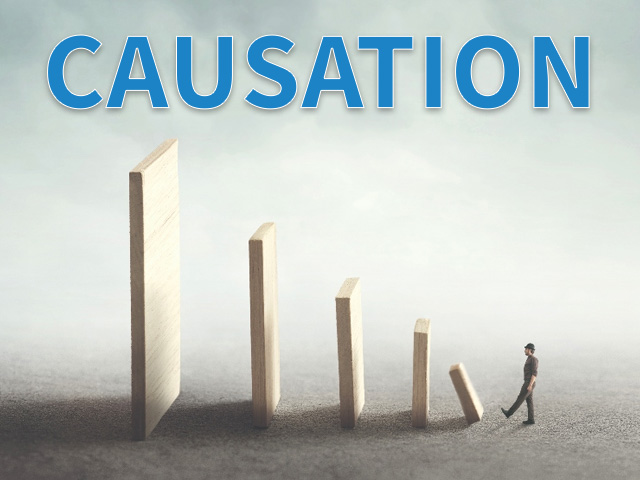How Torts Lead to Personal Injury Lawsuits – The Breach Element
Posted by Wetherington Law Firm | Articles
- Articles
- Artificial Intelligence
- Car Accidents
- Class Action Lawsuit
- Comparative Negligence
- Crime Victim
- Defective Vehicles
- Disability
- Kratom Death and Injury
- Legal Marketing
- Motor Vehicle Accidents
- News/Media
- Other
- Pedestrian Accidents
- Personal Injury
- Results
- Sexual Assault
- Truck Accidents
- Uber
- Wrongful Death
Categories
The following article is the fourth in a series about personal injury law. You can read the first article here, which explains where laws come from. You can read the second article here, which explains what a tort is. The third article explained the duty element in a negligence case.
This article will focus on explaining the second of four elements a plaintiff must prove in a negligence case – breach. It is written for people who do not have legal training and will err on the side of oversimplification. As a result, it should not be relied upon for complete accuracy or as legal advice.
Breach: The Second Element of Negligence
The second element in a negligence case is to prove that the defendant failed to act responsibly. This is called breach of duty. This proves that the defendant exposed another to the risk of injury or harm. Proving the elements of duty and breach demonstrates that a negligent act or omission has occurred. These acts or omissions are typically referred to as “negligent conduct.”
Standard of Care
In Georgia, jurors receive the following explanation for “standard of care:”
Ordinary negligence means the absence of or the failure to use that degree of care that is used by ordinarily careful persons under the same or similar circumstances.
This means establishing breach of duty requires understanding the full circumstances of an incident.
Juries have the responsibility of deciding whether the defendant breached their duty. In some cases where the facts are clear cut, the court may rule on the breach element. However, in most instances, courts do not like to remove this decision from the jury.
Reasonableness
People have a responsibility to act as a reasonable person. This is the standard of reasonableness that must be proven to a jury. Reasonableness is an objective test. The defendant’s beliefs about the reasonableness of their actions does not matter. It does not matter if the defendant honestly believed that he or she was acting reasonably. That would be a subjective test. Every person owes a duty to act as a reasonable person would act under the same or similar circumstances.
The Reasonable Person Standard
The question is how would a reasonable person act? This standard requires determining what the defendant should have done under those circumstances.
For example, everyone knows that texting while driving is dangerous. A reasonable person will not text while driving. The fact that a person does not intend to cause harm or only used his or her cellphone for a moment, does not excuse this unsafe behavior.
In the reasonable person standard definition above, the language states “under the same or similar circumstances.” The standard itself of acting reasonably is always the same. What would a reasonable person have done under similar circumstances?
Circumstances can vary. It’s usually reasonable to drive 60 miles per hour in a 65-mph speed zone. However, in heavy traffic or bad weather, a reasonable person will drive at a much slower speed. The amount of care and the type of conduct a reasonable person would use will differ with the surrounding circumstances. A skilled personal injury lawyer will research and understand the circumstances of each incident.
Community Customs
To help determine reasonable person standards, courts typically allow evidence to be presented about community safety-related standards. This can help determine whether the defendants complied with or departed from the community standards.
For example, if community residents often jump from a bridge into a pond below, this is a community safety standard. However, in bad weather or if there were floodwaters present, most reasonable people would not choose to jump from the bridge into the pond on that day.
It’s important to note this type of evidence is not conclusive in deciding breach of duty. It’s simply another factor in determining whether the defendant acted as a reasonable person.
For example, a fire safety statute may require a minimum size for windows in rented basement dwellings. But a jury may decide that the layout of this particular window requires installing a larger window than the minimum standard.
Negligence Per Se, You Say?
In rare instances, a breach may be established as a matter of law. This is typically the case where a defendant is accused of “negligence per se.” This means an act is considered negligent because it violates a law. Negligence per se acts often arise in trucking wrecks and DUI accidents. Attorney Matt Wetherington recently represented a client whose ankle was seriously injured after he was in a wreck with a drunk driver. We claimed that the driver was negligent per se because he was drunk, and his drunkenness contributed to the wreck. The jury agreed and rendered a verdict of 2.8 million.
Violating a criminal statute may establish breach of duty as a matter of law in the civil negligence action. It’s important to see if a defendant violated a criminal statute, regardless of whether the person was charged with a crime. Or, if the person is charged with a crime – or cited in the wreck – proof of the charge must be obtained in the form of a certified disposition.
Even when negligence or negligence per se has been proven, plaintiffs still must prove the other elements of a tort – causation and damages. For an exploration of those elements, we turn to the next article in this series, which will focus on causation.
